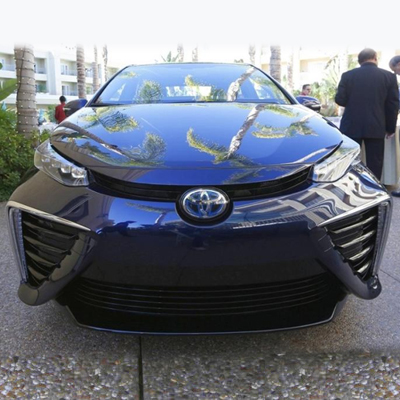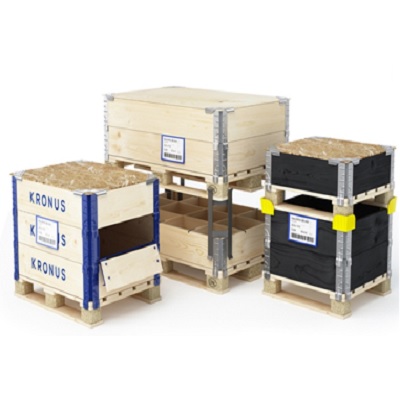Role of Robotic Simulation for BIW assembly

In the recent years, the number of new vehicle models and variants being launched in the market has risen tremendously to cater to the growing customer demands and retain a competitive edge. This need puts tremendous pressure on the auto company’s production ecosystem.
One of the biggest challenges in today’s automotive production environment is the incorporation of multiple vehicles at the same plant in much higher densities than in the past. Since the demand for new vehicles is increasing every year, OEMs are adding new models and variants by increasing the production capacity of their existing plant.
Driven by the need to increase production capacity and shorten cycle time, manufacturers in numerous industries are taking advantage of various automation technologies. One of these automation technologies is Robotics. Automakers and automotive related industries particularly implement greater use of robots in their BIW assembly line, as their assembly lines are quite complex. Robots automate the production of various components and simplify most of the tasks on assembly line.
Consequently, to successfully apply robotics technology in BIW assembly line, there lay a stronger need for effective analysis and design tools. Robotic simulation is one of the digital manufacturing techniques that help to visualize entire robotic workcells and sort out any problems before investing in costly equipment. Robotic simulation is widely utilized in the automotive industry as their BIW assembly line involves multiple robots, tooling fixtures, humans, etc. that needs to be validated and optimized prior to system build to ensure that it will yield the desired results. Cost savings, safety and user interaction are some of the advantages that makes robotic simulation a valuable tool in the manufacturing industry.
Why Robotic simulation?
Robotic simulation is a technique of building a model of a real or proposed robotic workcell so that the robot’s behavior may be studied. It aims at visualizing and optimizing the performance of a robot in a manufacturing cell, and can help in validating layouts, cycle time estimates, balance multi robot lines, optimize floor space, and check tooling and fixture designs. Everything from cycle time to robot reach to tool validation is performed in simulation. Robotic simulation:
- » Accelerates new product introduction (NPI)
- » Ensures a working process
- » Provides tremendous scope for optimization
- » Facilitates collaboration amongst design, digital manufacturing engineers, and shop floor
- » Eliminates costly mistakes
- » Saves time
About BIW assembly line
Product BOM of the BIW skeleton consists of more than thousands components, which can be broadly divided in four major groups -
- » Underbody assembly (assembly of motor compartment, front/rear floor, rear compartment, rocker)
- » Closures (sub assemblies of doors, decklid, hood , fenders)
- » Inner framing (assembly of bodyside inner, roof bow, shelf, rear-end)
- » Outer framing (assembly of body side outer, roof, motor rail extension)
All these major components of vehicle body are assembled through robotic operations like material handling, geo spot welding, respot welding, arc welding, nut/ stud welding, clinching, dispensing, pedestal operations, vision system, hemming, tabbing etc.
Essential capabilities of Robotic Simulation in BIW assembly
The core activities of robotic simulation in BIW assembly are:
- » Validate and optimize the Process
- » Validate and optimize the Tools
- » Validate and optimize Plant Layout
- Validate and Optimize the Process
Robotic simulation is a powerful tool that helps in simulating the entire process and verifying that the robots can perform all the desired tasks efficiently. Automotive workcells usually have multiple robots that have to be sequenced properly to optimize cycle times and minimize interference zone wait times.
A typical automotive BIW has several thousand weld spots to create the assembly from the individual sheetmetal stampings, and a significant amount of time goes in determining an optimum weld spot distribution between the robots. Robotic simulation addresses the early planning phase of spot-welding design process. It facilitates optimum weld spot sequence and distribution of weld points to multiple stations in a simulation environment. Similarly, other processes like material handling, dispensing and arc welding process sequences can also be validated and optimized through robotic simulation. The robotic simulation team works in close collaboration with the processing team to design and validate all processes in a 3D model. The simulation team analyzes alternate scenarios to identify a process with optimum cycle times. By simulating robot motions during design, the team verifies whether the robots will be able to achieve the required motions without interference and arrive at a realistic cycle time and throughput. - Validate and Optimize the Tools
The key to successful robotic work cell implementation is the robust and functional design of tooling and fixtures around the robots. 3D representation of tooling has become indispensable for configuring the end-of-arm tooling (EOAT), and communicating design issues to tooling teams earlier in the development cycle. Robotic simulation can help in identifying potential issues with mechanical design of end-of-arm tooling and suggest necessary modifications to the tool design team. It validates and ensures that EOAT designs are suitable for all robot tasks and associated equipment. All necessary tooling and robot attachments go through multiple design iterations due to simulation validation like gun access in/out, gripper access in/out, robot payload, robot reachability, tool access, clearance, swept volume, etc. Therefore, the collaboration between tool design team and robotic simulation team should begin from the design phase as all tools can be validated on above parameters until an optimized design is reached. This is particularly important in a Brownfield project, where tools are much more complex as they have to handle multiple variants of cars. - Validate and optimize Plant Layout
Layout of systems can significantly impact overall cycle time. Robotic simulation helps in determining workcell layouts with optimal placement of peripheral equipment such as fence, floor tracks, light screens, etc. The robot work envelope is evaluated for layout of all supporting equipments within the workcell. Different factors such as work points, cycle time constraints, reachability and interference are taken into consideration, while designing the layout. Several layout options are analyzed in the simulation model to arrive at the most suitable equipment locations in relation to the robots. A final plant layout is then arrived at from the simulation results.
- Validate and Optimize the Process
With multiple vehicle models being produced in same facility, the layout has to be configured using optimal floor space. In a Brownfield plant, robot work envelope layouts are developed considering the space constrictions and movement limitations as any physical modification in the plant can interrupt the ongoing production resulting in high wastage of time and money. The plant layout group alone cannot analyze suitable locations of plant BOM. Through effective collaboration between the robotic simulation and plant layout teams, they determine an optical location of plant BOM.
Software used
Currently, there are number of commercial software available on the market. Some of the robotic simulation software's used by major auto OEMs across the world are DELMIA D5 (IGRIP), DELMIA V5, Tecnomatix- Robcad & Tecnomatix process simulate.
Major Deliverables from robotic simulation
- » Offline programming (OLP)
- » Realistic robot cycle time
- » Robot mounting sheet
- » Simulation movie files
- » Layout file
Summary
The demand for automated robotic workcells is growing exponentially to meet the OEM targets and requirements. Robotic simulation plays a key role in automotive BIW assembly line to ensure a working and an optimized process with reduced cost and time to manufacture, and in ensuring the inclusion of the production of a new vehicle or variant on the existing assembly line without disrupting the current production.
About the author
Mr. Vadivel Murugan is a Project Leader, Robotics and Plant Layout team, Geometric Limited. He has an experience of 11 years in Automotive Weld tool design, BIW assembly line robotic simulation and Automotive Plant Layout system.
Mr. Murugan has a Bachelors degree in Mechanical Engineering and an MBA in Production Planning and Control. He can be reached at [email protected]



